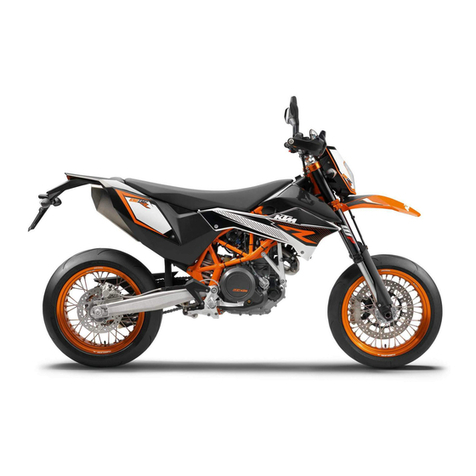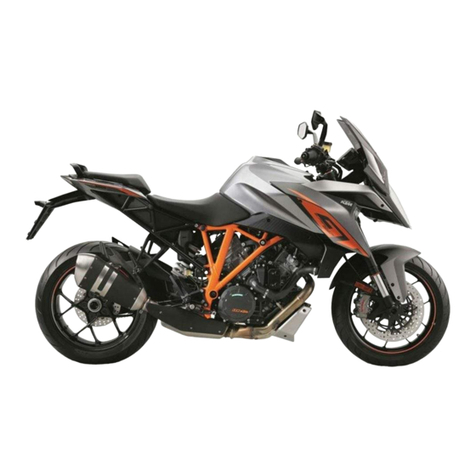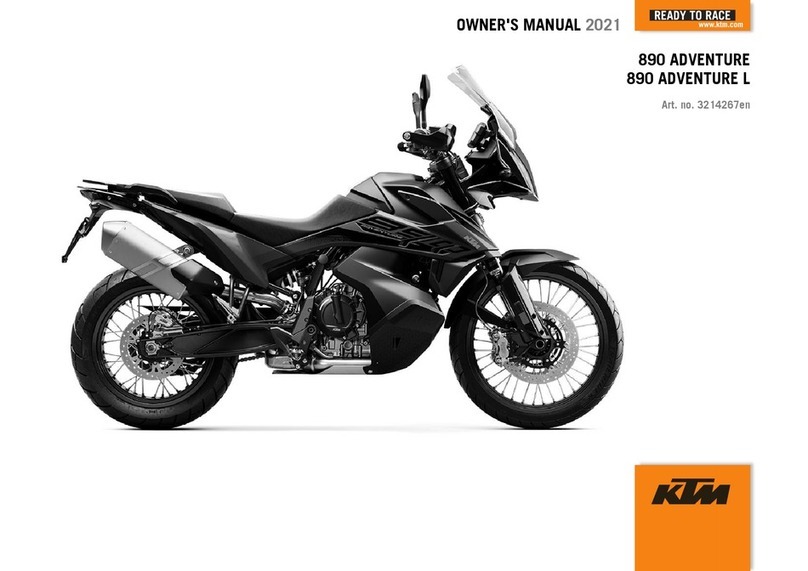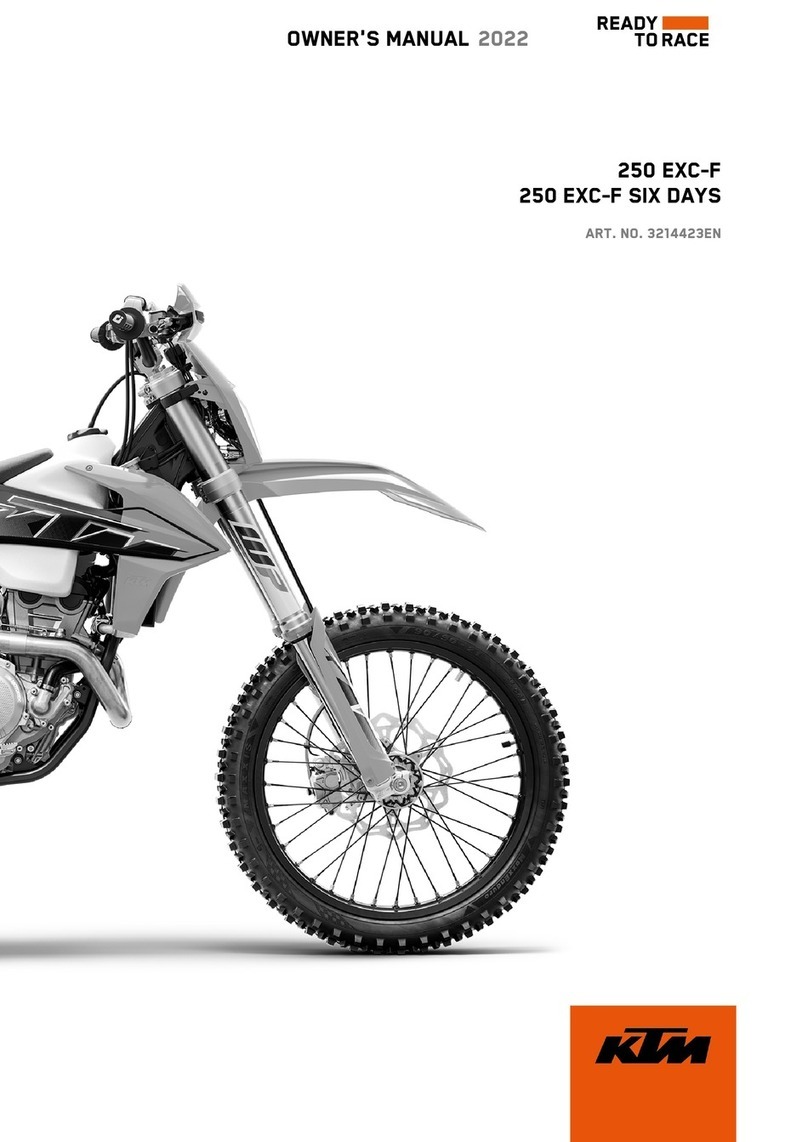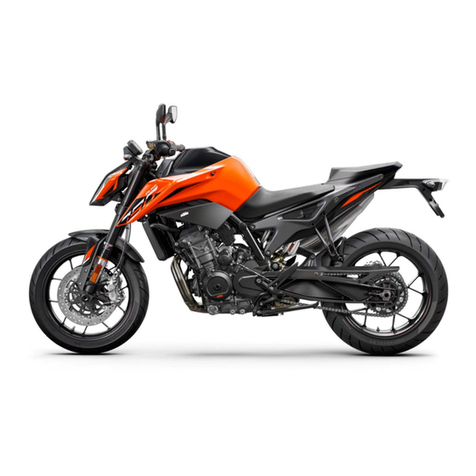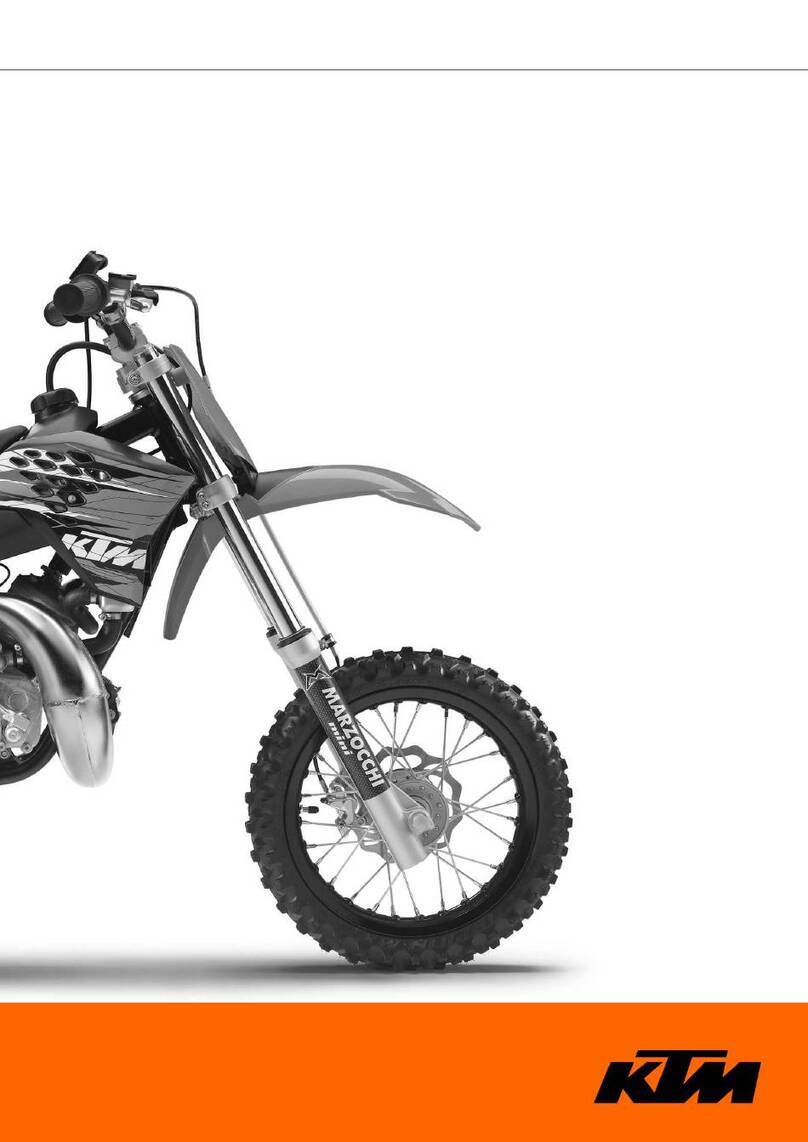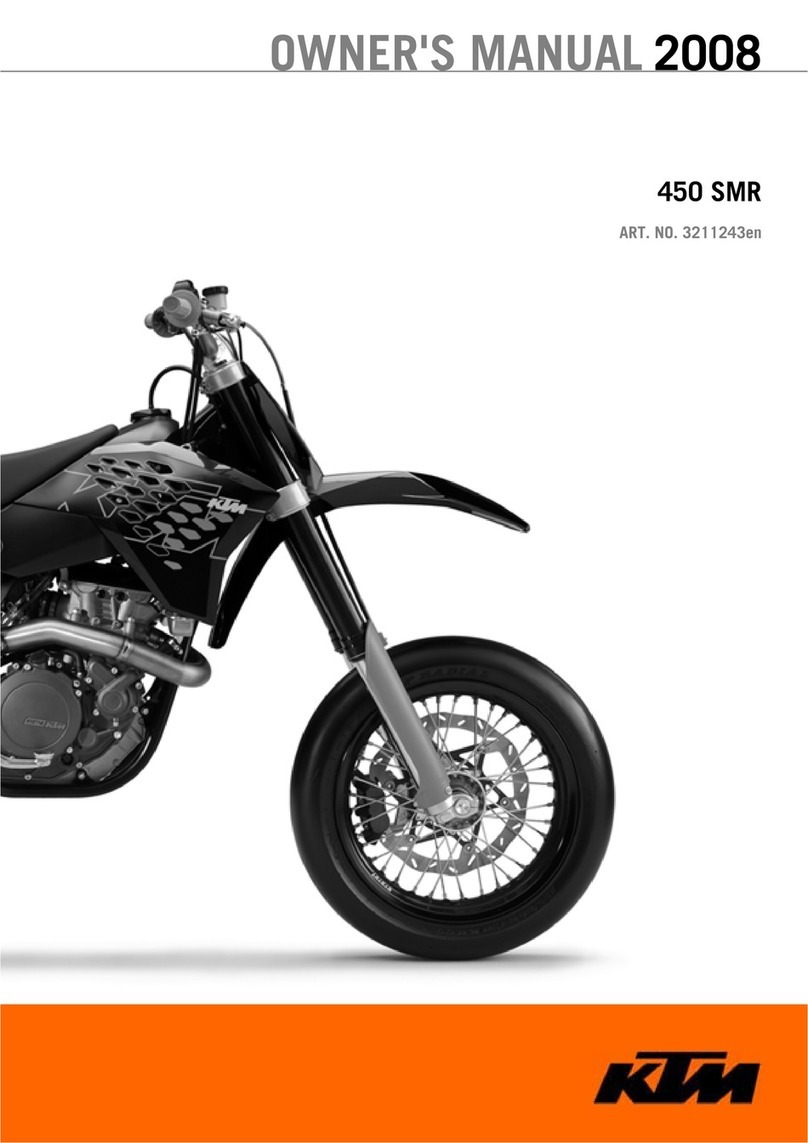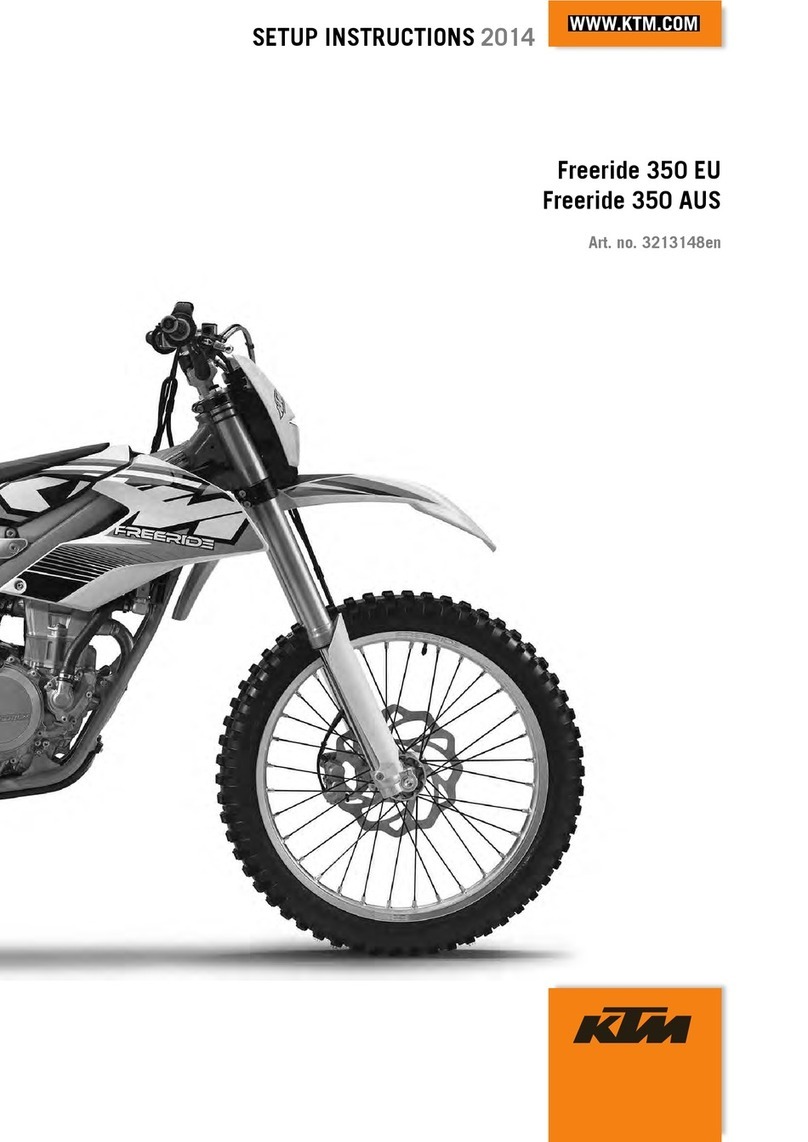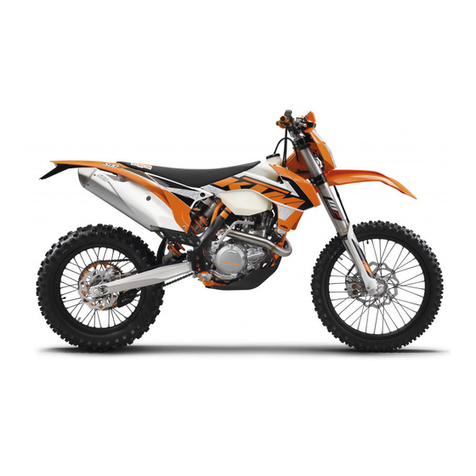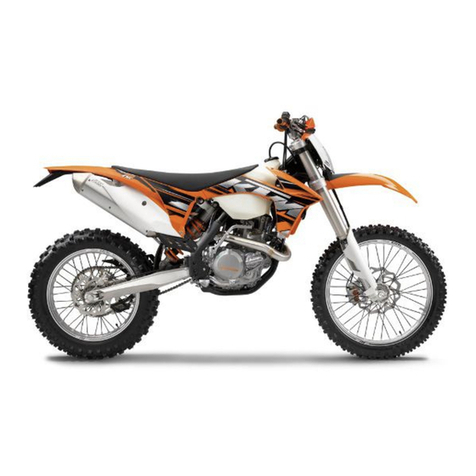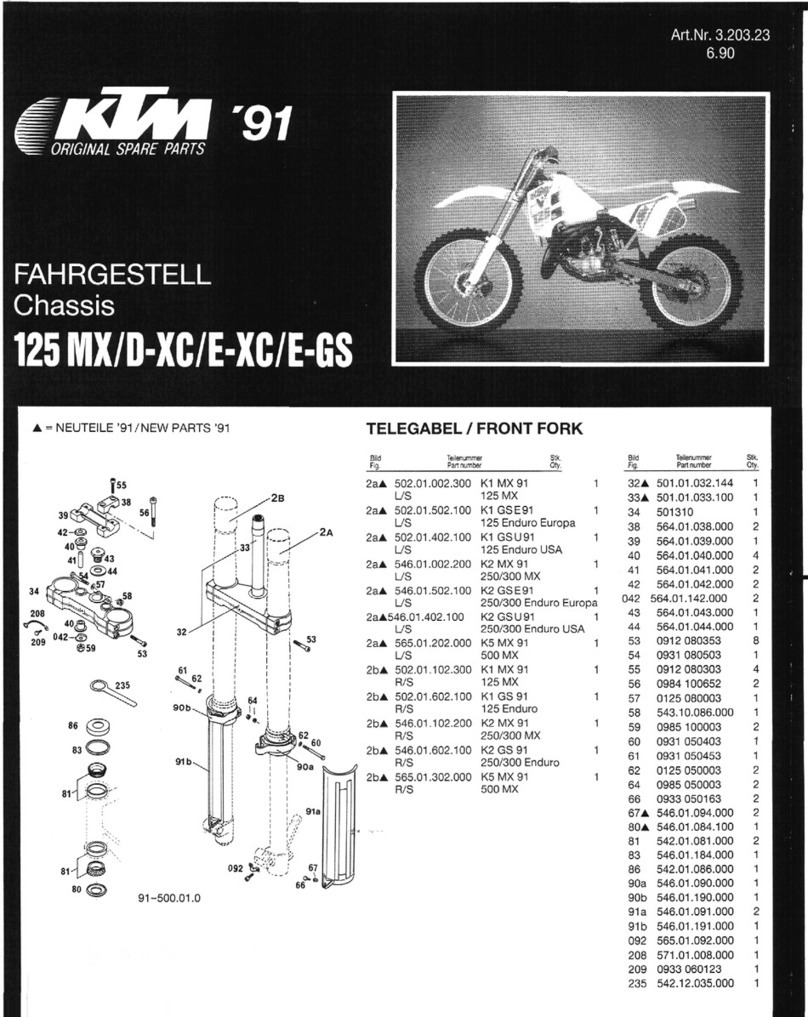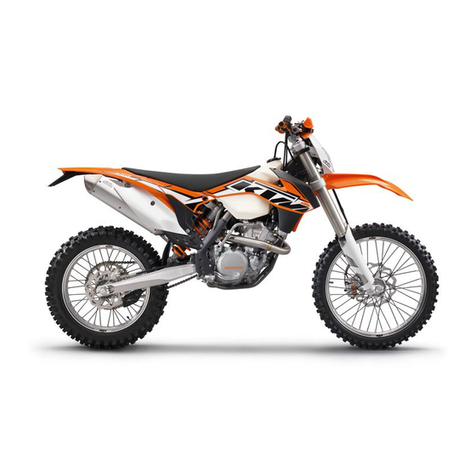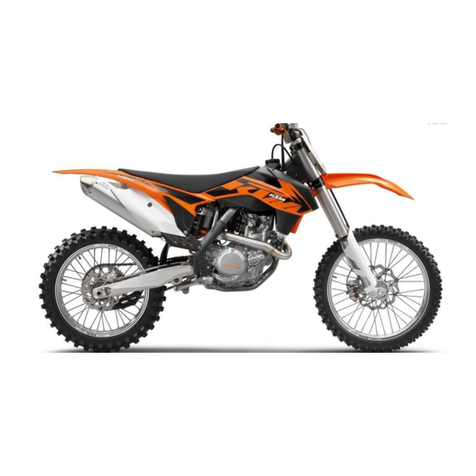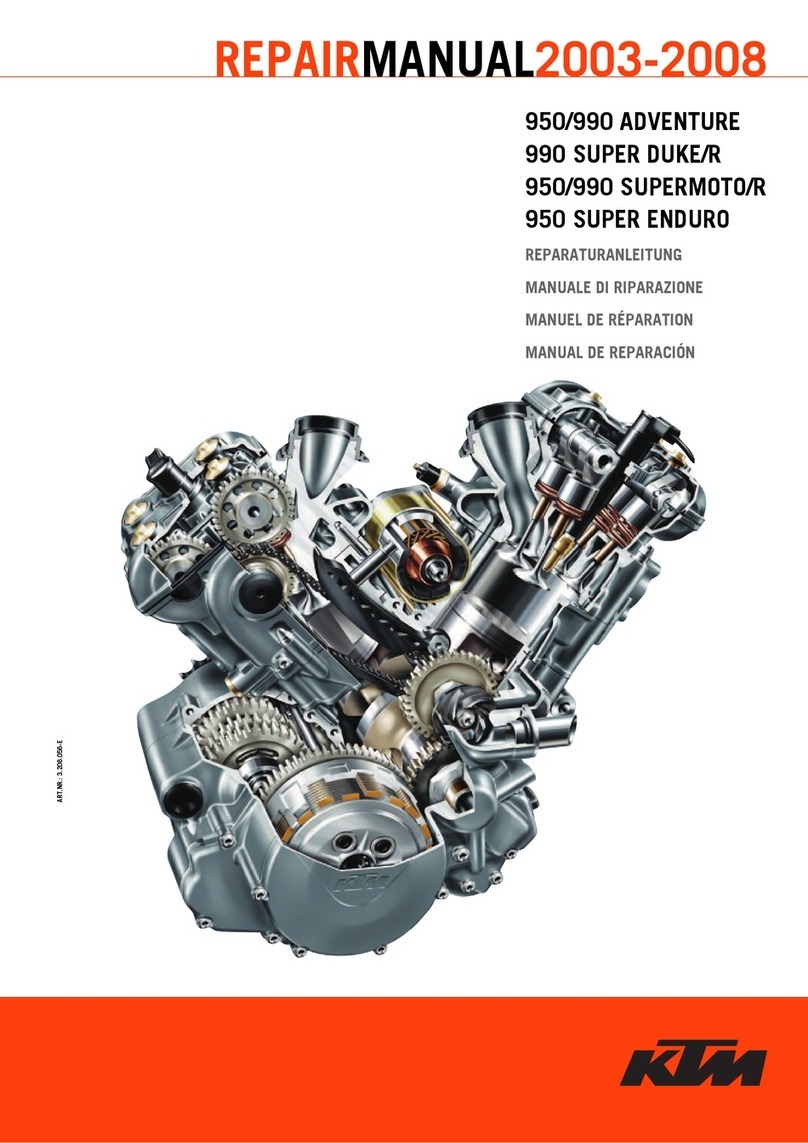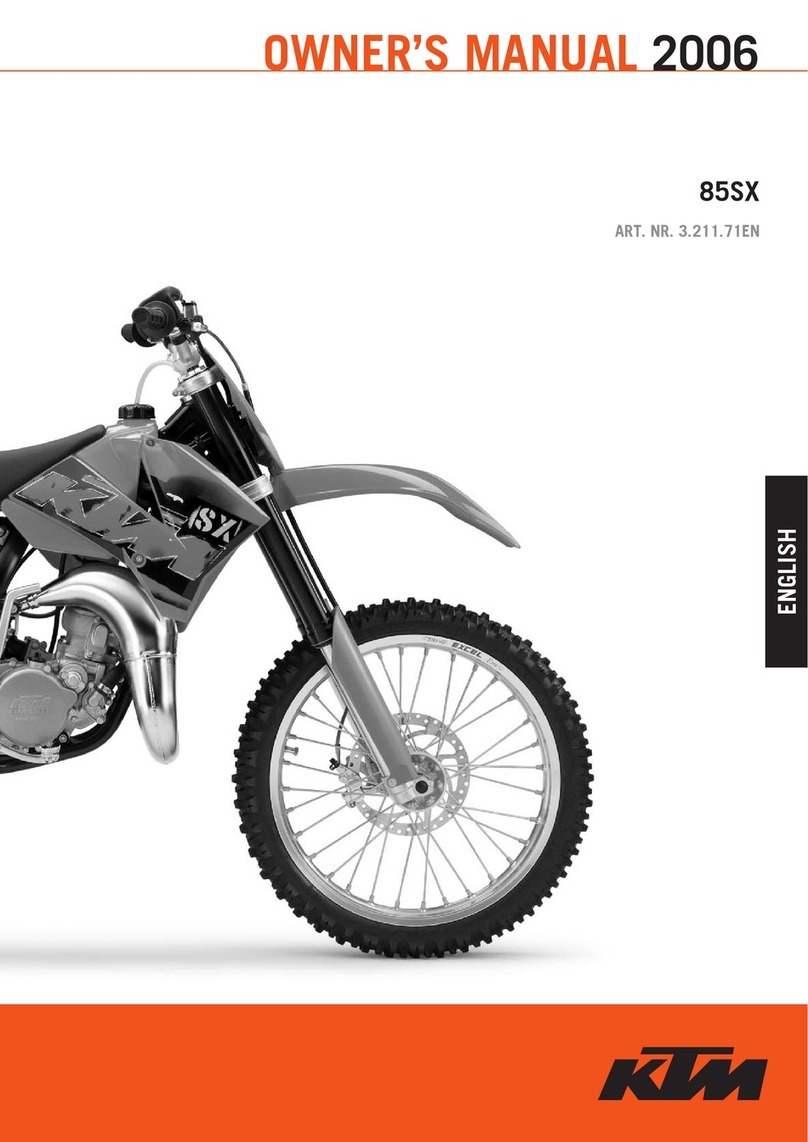ENGLISH
4
INDEX »
Page
SERIAL NUMBER LOCATIONS . . . . . . . . . . . . . . . . . . .5
Chassis number . . . . . . . . . . . . . . . . . . . . . . . . . . .5
Engine number, Engine type . . . . . . . . . . . . . . . . . .5
OPERATION INSTRUMENTS . . . . . . . . . . . . . . . . . . . . .5
Clutch lever . . . . . . . . . . . . . . . . . . . . . . . . . . . . . .5
Hand decompression lever . . . . . . . . . . . . . . . . . . . .5
Hand brake lever . . . . . . . . . . . . . . . . . . . . . . . . . . .5
Electronic speedometer . . . . . . . . . . . . . . . . . . . . . .6
Indicator lamps . . . . . . . . . . . . . . . . . . . . . . . . . . .10
Combination switch . . . . . . . . . . . . . . . . . . . . . . . .11
Flasher switch . . . . . . . . . . . . . . . . . . . . . . . . . . .11
Emergency OFF switch (Australia) . . . . . . . . . . . . .11
Filler cap . . . . . . . . . . . . . . . . . . . . . . . . . . . . . . .11
Fuel tap . . . . . . . . . . . . . . . . . . . . . . . . . . . . . . . .11
Choke . . . . . . . . . . . . . . . . . . . . . . . . . . . . . . . . .12
Hot start device . . . . . . . . . . . . . . . . . . . . . . . . . .12
Shift lever . . . . . . . . . . . . . . . . . . . . . . . . . . . . . .12
Kickstarter . . . . . . . . . . . . . . . . . . . . . . . . . . . . . .12
Foot brake pedal . . . . . . . . . . . . . . . . . . . . . . . . . .12
Handlebar lock . . . . . . . . . . . . . . . . . . . . . . . . . .13
Compression damping of fork . . . . . . . . . . . . . . . . .13
Rebound damping of fork . . . . . . . . . . . . . . . . . . .13
Compression damping of shock absorber . . . . . . . . .13
Rebound damping of shock absorber . . . . . . . . . . .13
GENERAL TIPS AND WARNINGS FOR STARTING
THE MOTORCYCLE . . . . . . . . . . . . . . . . . . . . . . . . . .14
Instructions for initial operation . . . . . . . . . . . . . . .14
Running in the LC4 models . . . . . . . . . . . . . . . . . .14
Accessories and payload . . . . . . . . . . . . . . . . . . . .14
DRIVING INSTRUCTIONS . . . . . . . . . . . . . . . . . . . . . .15
Check the following before each start . . . . . . . . . . .15
Starting when the engine is cold . . . . . . . . . . . . . .16
Starting when the engine is warm or hot . . . . . . . . .16
What to do when the engine is “flooded” . . . . . . . .16
Starting off . . . . . . . . . . . . . . . . . . . . . . . . . . . . . .16
Shifting/Riding . . . . . . . . . . . . . . . . . . . . . . . . . . .17
Braking . . . . . . . . . . . . . . . . . . . . . . . . . . . . . . . .17
Stopping and parking . . . . . . . . . . . . . . . . . . . . . .17
Fuel . . . . . . . . . . . . . . . . . . . . . . . . . . . . . . . . . . .18
PERIODIC MAINTENANCE SCHEDULE . . . . . . . . . . . .19
MAINTENANCE WORK ON CHASSIS AND ENGINE . . .21
Removal of seat . . . . . . . . . . . . . . . . . . . . . . . . . .21
Tool set . . . . . . . . . . . . . . . . . . . . . . . . . . . . . . . . .21
Check and adjust steering head bearing . . . . . . . . . .22
Breather plug front fork . . . . . . . . . . . . . . . . . . . . .22
Cleaning the dust sleeves of the telescopic fork . . . .22
Basic suspension setup for the weight of the driver . .23
Changing the spring preloading of the shock absorber
. .24
Checking rubber ring on the WP rear shock absorber
. .25
Lubricate rear suspension linkage . . . . . . . . . . . . . .25
Checking chain tension . . . . . . . . . . . . . . . . . . . . .25
Page
Correct chain tension . . . . . . . . . . . . . . . . . . . . . .26
Chain maintenance . . . . . . . . . . . . . . . . . . . . . . . .26
Chain wear . . . . . . . . . . . . . . . . . . . . . . . . . . . . . .26
General information about KTM disc brakes . . . . . .27
Changing the basic position of the handbrake lever . .28
Checking of brake fluid level - front brake . . . . . . . .28
Refilling the front brake fluid reservoir . . . . . . . . . .28
Checking the front brake pads . . . . . . . . . . . . . . . .28
Replacing the front brake pads . . . . . . . . . . . . . . . .29
Check the rear brake fluid level . . . . . . . . . . . . . . .29
Refilling the rear brake fluid reservoir . . . . . . . . . . .29
Changing the basic position of the brake pedal . . . .30
Checking the rear brake pads . . . . . . . . . . . . . . . . .30
Replacing the rear brake pads . . . . . . . . . . . . . . . .30
Dismounting and mounting the front wheel . . . . . . .31
Dismounting and mounting the rear wheel . . . . . . .31
Tires, air pressure . . . . . . . . . . . . . . . . . . . . . . . . .32
Checking spoke tension . . . . . . . . . . . . . . . . . . . . .32
Checking the shock absorption rubbers in the rear hub
. .32
Check/set distance of the magnetic sensor . . . . . . .33
Replacing the battery in the electronic speedometer
. .33
Replacing the fan fuse . . . . . . . . . . . . . . . . . . . . .33
Replacing headlight lamp/parking light lamp . . . . . .34
Exchanging the brake light and tail light bulb . . . . .34
Cooling system . . . . . . . . . . . . . . . . . . . . . . . . . . .35
Checking the coolant level . . . . . . . . . . . . . . . . . . .35
Cleaning of air filter . . . . . . . . . . . . . . . . . . . . . . .36
Exhaust system . . . . . . . . . . . . . . . . . . . . . . . . . . .36
Adjusting the throttle cable . . . . . . . . . . . . . . . . . .37
Checking the adjustment of the hand decompression cable
. .37
Changing the original position of the clutch lever . . .37
Checking the oil level of the hydraulic clutch . . . . .38
Bleeding of the hydraulic clutch . . . . . . . . . . . . . . .38
Draining the float chamber of the carburetor . . . . . .38
Carburator – Adjust idling . . . . . . . . . . . . . . . . . . . .39
Adjusting the mixture control screw . . . . . . . . . . . . .39
Checking the float level (float height) . . . . . . . . . . . .39
Engine oil . . . . . . . . . . . . . . . . . . . . . . . . . . . . . . .40
Checking the engine oil level . . . . . . . . . . . . . . . . .40
Oil circuit . . . . . . . . . . . . . . . . . . . . . . . . . . . . . . .40
Oil, oil filter and screen filter change,
bleeding of the oil system . . . . . . . . . . . . . . . . . . .41
TROUBLE SHOOTING . . . . . . . . . . . . . . . . . . . . . . . .43
CLEANING . . . . . . . . . . . . . . . . . . . . . . . . . . . . . . . .45
CONSERVATION FOR WINTER OPERATION . . . . . . . . .45
STORAGE . . . . . . . . . . . . . . . . . . . . . . . . . . . . . . . . .45
RE-INITIATION AFTER TIME OF STORAGE . . . . . . . . .45
TECHNICAL SPECIFICATIONS – ENGINE . . . . . . . . . .46
TECHNICAL SPECIFICATIONS – CHASSIS . . . . . . . . .47
HEAD WORD INDEX . . . . . . . . . . . . . . . . . . . . . . . . . .49
WIRING DIAGRAMME . . . . . . . . . . . . . . . . . . .APPENDIX
